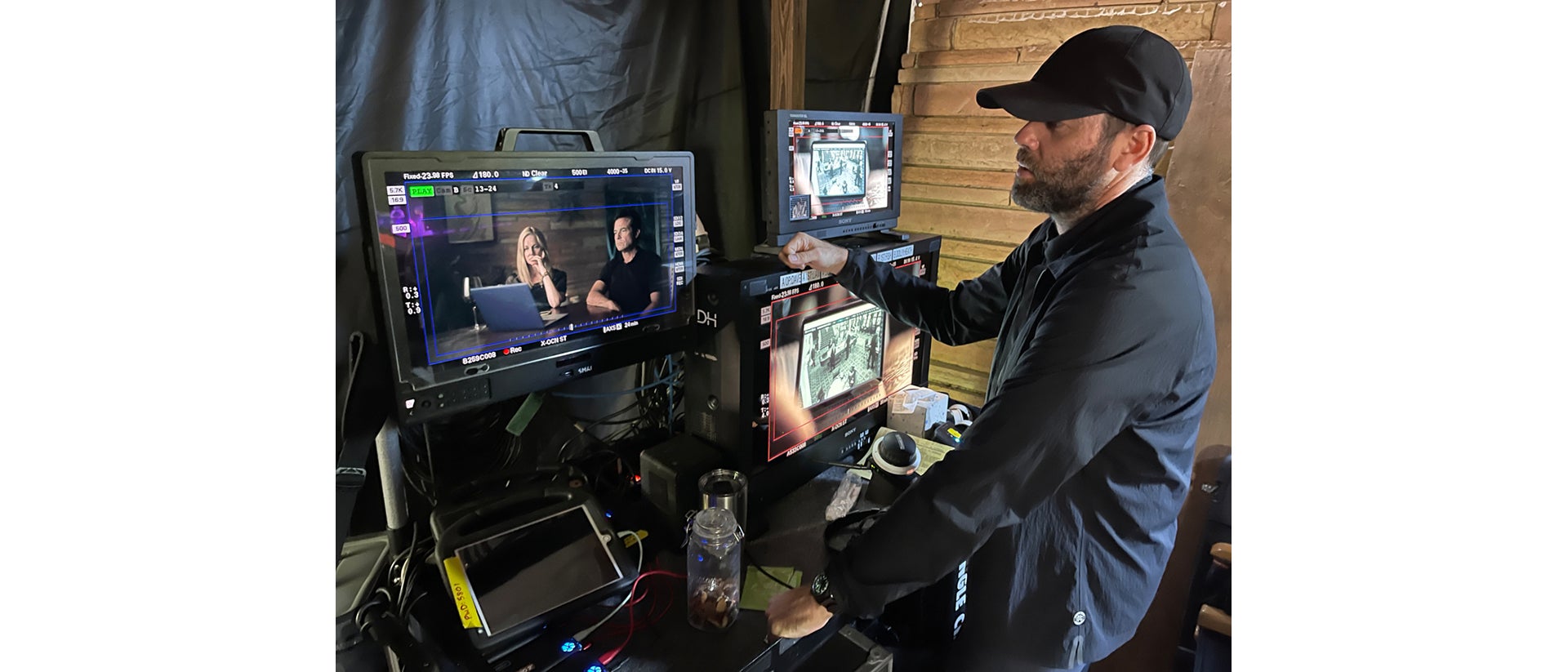
09-22-2022 - Case Study, Gear, Technology
Shot on VENICE – Ozark Season 4 – DP Eric Koretz Discusses Shooting the Show Finale
By: Jeff Berlin
What’s it like coming in as DP to shoot the final season, and final episode, of Ozark? For DP Eric Koretz, who was already a big fan of the show, it was in his words, “incredible.” Over the course of its four-season run, Ozark has received a total of 44 Emmy noms and Julia Garner clocked another Primetime Emmy win for her supporting role as Ruth Langmore, also winning in 2019 and 2020. We recently sat down with Eric to discuss his approaches to filmmaking and how they allowed him to bring his own visual style and sensibilities into the episodes he shot. And if you have yet to see the show or the final season, spoilers ensue.
Jeff Berlin:
How did you end up working on season four of Ozark ?
Eric Koretz:
One of the operators on the show, with whom I had worked before, recommended me. And Shawn Kim, the A DP who started the season, we had known each other's work. He called and we talked about just film at first, and then we talked about the show, what he was doing, what they were looking for. And we vibed really well. I then talked with Jason Bateman and at the end of our conversation he said, "I just wanted to make sure you weren't a jerk." And then I was on the show.
JB:
When you were interviewing and being considered for the project, what were some of their considerations?
EK:
Well, for one, it's about how you approach making a TV show because Ozark is unique in that it's really a filmmaker-centric show. It's not the normal turn-it-out TV series. So, I think one of the things that appealed to them about my work is that every project I've done is different. I'm sort of a chameleon and can bring whatever the story takes to the cinematography.
A lot of it was discussing how we shoot this in a filmmaker way and not in a just get-it-done-TV kind of way. We talked about technique and how I work and how they work. And how they work is how I love to work, and vice versa. So, that made it easy, I think.
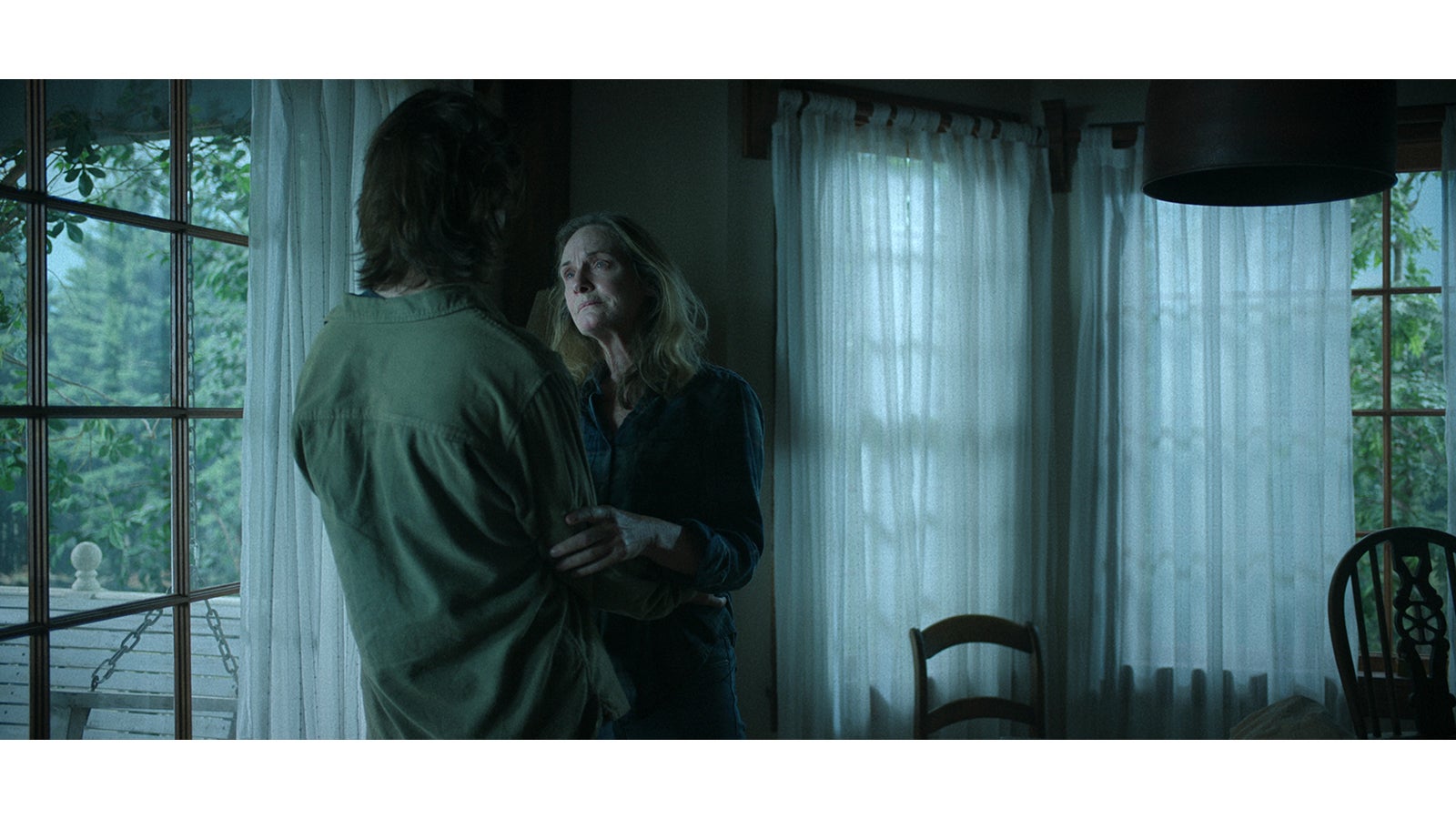
Courtesy Netflix
JB:
What are your thoughts on the balance of creative and technical? The show already had an existing look, so, you're coming into something that’s established. Ozark wanted what you were bringing in terms of sensibility and creative sense, but there’s a technical aspect to all that as well, so tell me about your philosophy on that balance.
EK:
I've always been interested in the technical side of filmmaking. I always look for what's next and how I can use different tools to make my work better. In Ozark, we use a lot of the big tools that you would see on a lot of other shows, like Technocrane and remote heads. But really, on a simple level, it just comes down to the camera and lenses and the other tools don't matter so much. It's more about telling the story in the way that works for Ozark. So we had a Sony VENICE and Leica R rehoused lenses, and if you start with your camera and lenses, those are your paint brushes, and then you use your tools accordingly just to make shots. You don't use the tools just for tools' sake, you use them if they help tell a story better. And that was actually also part of the discussion, that we don't just put something on a Technocrane just because we want to move the camera around. It was always specific.
If we were using the Technocrane, it was for a specific reason, for a movement we wanted that only the Technocrane could achieve. You make these decisions based on what tools are right for the shot.
JB:
There was a great Technocrane shot right at the end of the final episode where Marty and Wendy come home and the camera moves through the house, exiting the glass door and reveals Mel the private investigator sitting in the backyard. What's your philosophy on camera movement?
EK:
I don't like arbitrarily moving the camera. It should move when it's necessary for the story. In that scene, they're coming home and you think things are happening a certain way. You're inside, in the home, and the Byrdes are settling down after a crazy night. How could it get any worse?
And then as an audience, you start thinking, "Oh, wait, we keep pulling back. Something's happening here but subconsciously, I don't know what it is." And then once you pull through the door and see the glass, the audience is thinking, "Oh, yeah, something's about to be revealed." The camera is pulling the audience into a certain perspective. Jason [Bateman] made it a big deal that he wanted it to be actual glass that we move the camera through and not CG.
You're basically pulling the audience out of the Byrde's home into the danger that's there waiting for them. So, psychologically, that does a lot because you could do that with cuts. But if you do it in one shot, it really makes that moment more impactful because you're basically learning what's happening right before the Byrdes. And then the Byrdes turn to see the glass and finally go outside. And it sets that moment up so beautifully in a way that having different cuts wouldn't have done as well.
So, any of the camera movements we made in Ozark were very judicious. If it's Steadicam, it's got a purpose. It's not just for a walk and talk, it's to reveal something about the character or the scene or the movement.
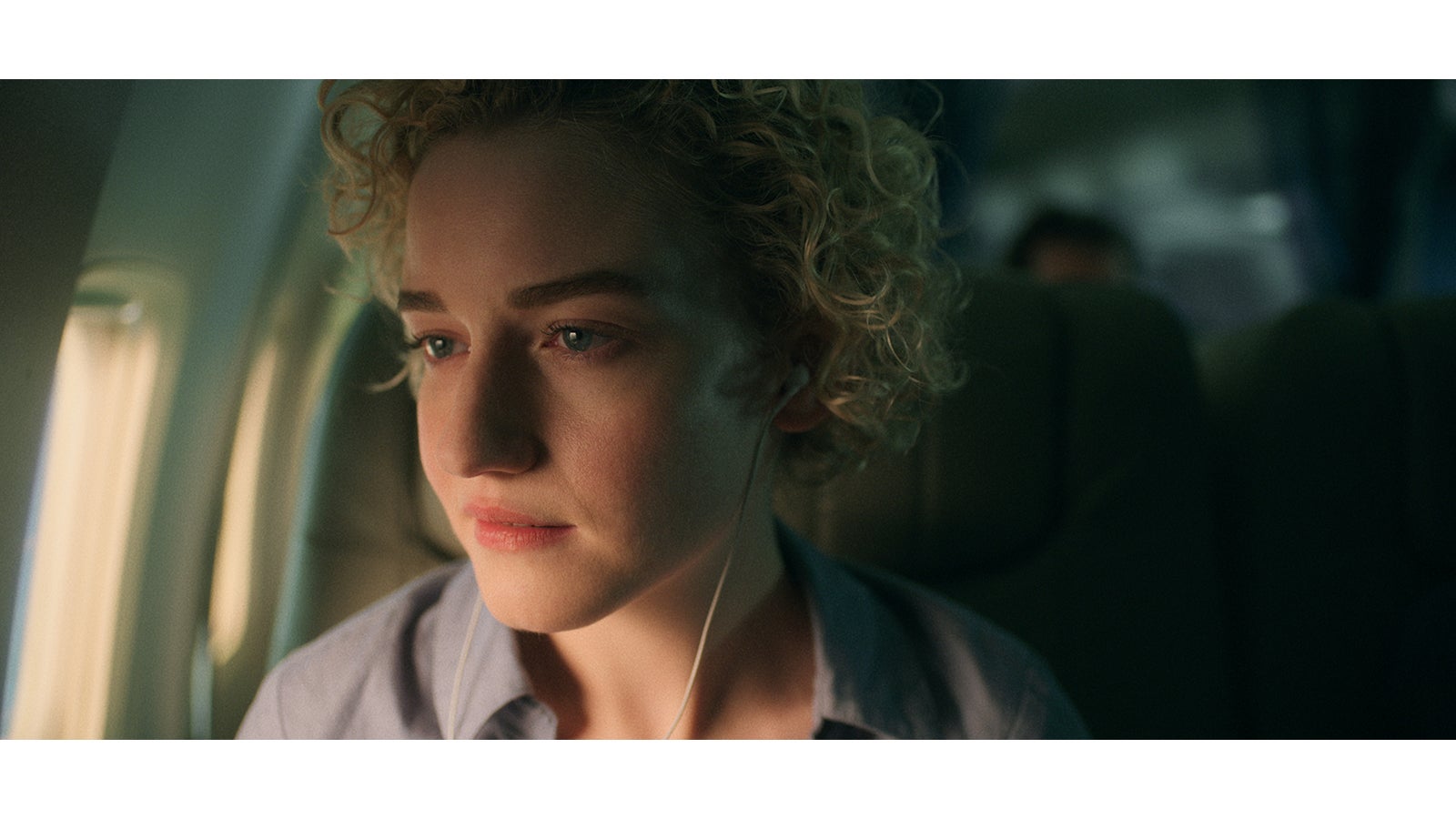
Courtesy Netflix
JB:
How is Jason Bateman to work with as a director?
EK:
He's incredible, so precise. He's been in this business for so long so he knows exactly what he wants. And I'm sure he's been thinking about the finale for a long time. It's great working with a technical director because it frees you to really think about the purpose behind the shots, and the lighting. He lets you be more specific with your intention for the scene.
JB:
Have you used VENICE much before this show?
EK:
Yes, I own a VENICE and my VENICE 2 is coming soon. So, I've used nothing but Sony VENICE for the last three-plus years.
JB:
What do you like about the VENICE version 1 that you now have a VENICE 2 on order?
EK:
I haven't used anything else since I bought one. The color science is incredible. The one-stop ND system is an incredible time-saver. The dual ISO is so useful since there are a lot of times when you really need more light and just going from 500 to 2500 without loss in quality is such a useful feature. I use that all the time. I use VENICE on everything I do, from narrative to commercials.
JB:
How do you feel about how VENICE conveys skin tones and color?
EK:
Skin tone-wise, incredible, very neutral. But you can push them in any direction you want with a LUT. I do wildly different projects where the look is very different between them. And depending on the LUT I build, I always love the results.

Koretz left, in black, on set
JB:
What are your thoughts on the latitude of the files when you get into the color timing?
EK:
I've worked with a lot of colorists color timing Ozark and other projects. One of the great benefits of the VENICE is the latitude, digging into the shadows, the roll off of the highlights. My pet peeve is not seeing things blown out in any way. I hate it. And I shoot for the highlights a lot of times to get them as low as possible for the scene, and the VENICE is incredible with highlights.
I'm always happy when I get into color because there's just so much latitude to work with. And you can really see that in Ozark where we're working in the shadows a lot. Most of the time, we color it so you can just see, if you have a good TV, some of the texture in the shadows and the character's shadow side of their face. We're playing in that danger zone where some other cameras just fall apart. But the VENICE holds the shadows really well.
Tim Stipan at Company 3 is an incredible colorist. We were coloring in HDR and then at the same time doing the SDR. It's a requirement. At first, I didn't like it because as a filmmaker, traditionally, when you hear the word HDR you think of over-pumped colors, but not in the way that we colored this. HDR is the correct way to watch the show. It allows you to see the most tonal range.
JB:
Yep, and skin tones shouldn't change between HDR and SDR anyway. You should just see more detail in the shadows and the highlights.
EK:
That's what it should be.
JB:
Did you guys monitor HDR on set?
EK:
We did. We had an HDR and two SDR monitors on set. It’s a bit of a trap because you're seeing so much detail. That's why we also had the SDR monitors to evaluate, "Okay, should we dial this back a little bit for the SDR passes?" It's important to see both so you really know if you're going too far.
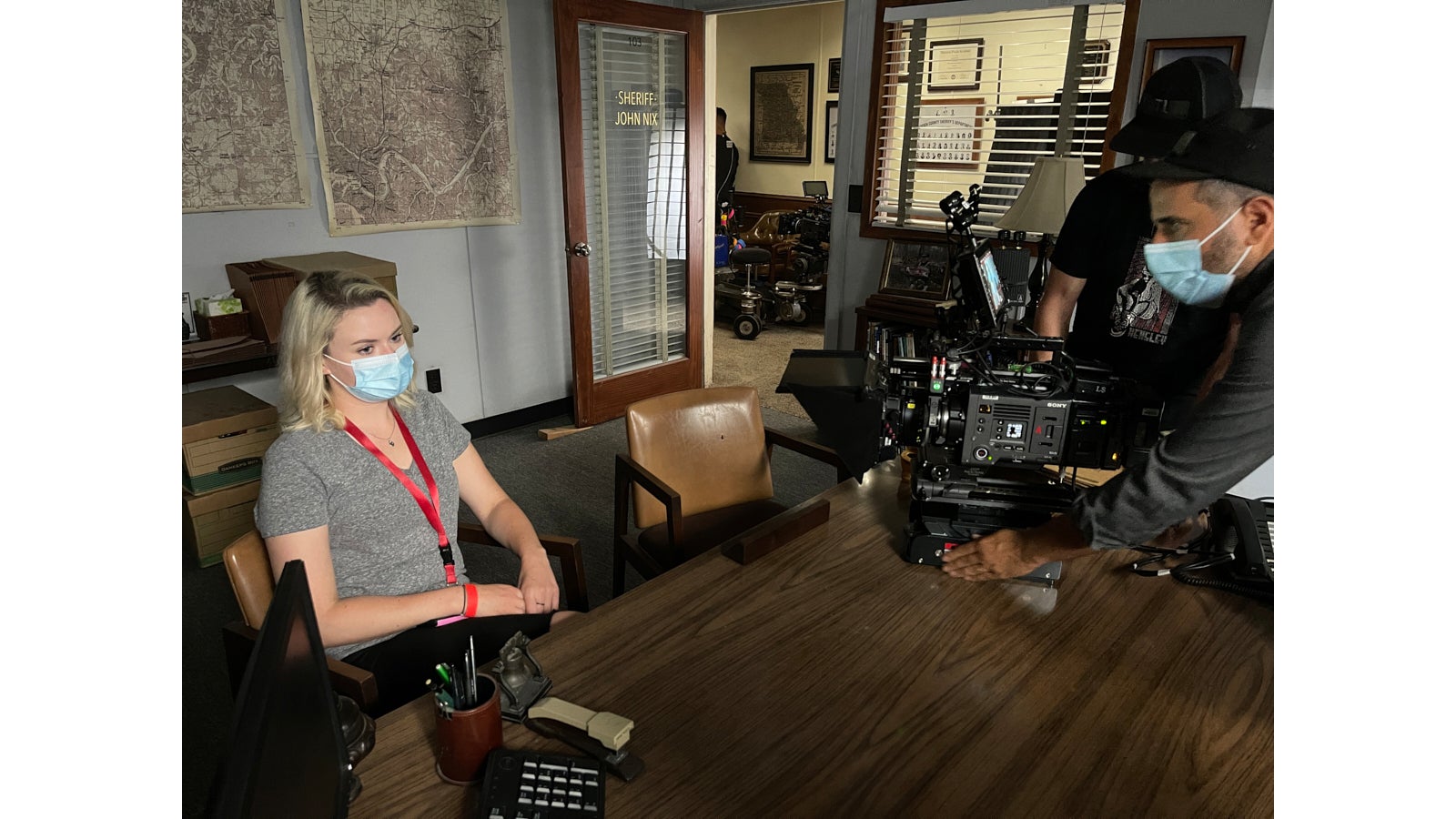
Lining up a shot with a stand-in
JB:
Ozark’s cool tone, is the camera set at 4400? And can I assume you also have a custom LUT?
EK:
We started with the base LUT developed by [DP] Shawn Kim, who started the season and with whom I alternated for the second part of the final season. We used this LUT as the base LUT. There are two base LUTS, Mexico, which is warmer, and then the Ozark LUT, which is obviously a little more green.
We started with the base LUT and adjusted green channel. I think it was around 20 points of green added in some scenes. And then yes, often the camera was set at 4400, which also changes the colors significantly. So, to get accurate color. you're just trusting what the monitors are showing you and what your waveform and all your color tools are reading.
JB:
For the low-light scenes, how were you exposing?
EK:
I always underexpose. The LUT has a bit of leeway, so if I'm underexposing, the LUT actually has a bit more exposure information in it. That's how it was built. But I always prefer underexposing. If I want to pump it a little from there, I can do it in post. I'm always protecting the highlights. But also, I don't want the shadows to go muddy or lose detail. So you got to look for both when you're setting up a shot.
JB:
About how far are you underexposing?
EK:
Skin tones are usually under 40 IRE, but there was no real rule for how far we're underexposing. It's sort of a general feeling. I tend to light that way. In the color correction, Tim did put a bit more pop into the mid tones and in some cases, bring the exposure up a bit more. In some cases, we went too far. The beautiful thing about the VENICE is the information was always there to get it back if we needed it.
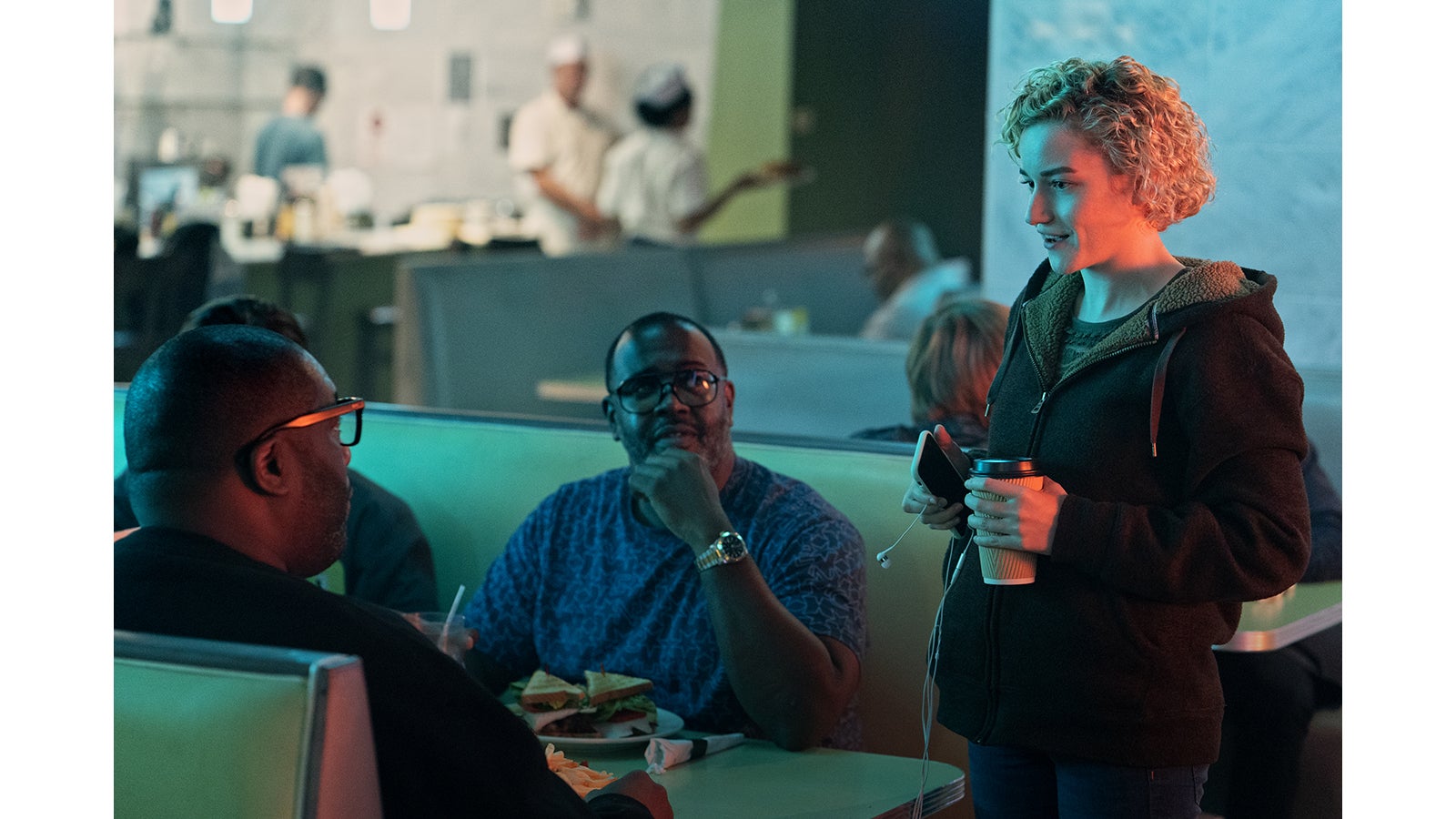
Tina Rowden / Netflix
JB:
How about noise at those levels?
EK:
It's very clean. We would play with the ISOs to try and get a little bit of noise into it but not too much. The footage from the VENICE is so clean that we added grain in post.
JB:
Some people feel there's a bit of an organic feel to the noise at 2500. Sometimes also they'll dial it down to 1250 or 1600.
EK:
We very rarely shot for this show at 2500. We set the base at 2500 and then we'd set it at 1600 and 1250. That was definitely a thing that we did because we liked what the noise was doing.
JB:
Coming into a series after so much has been established, is there kind of a recipe already?
EK:
Yes, there's a recipe but you never want to fall into the trap of, "Oh, we're just going to do the same thing we did before." You want to always evolve and change it and this story always calls for something different in the lighting to really evolve with the story and inform what the characters are doing or thinking or how you want to move the story forward.
One of the great things about Ozark is that it's created from a real filmmakers' perspective. So, they're not expecting you to just come in and do over, over and then your day is done. You bring something unique to each scene and each location that is different from scene to scene and story to story. So, that's one of the beautiful things about working on Ozark.
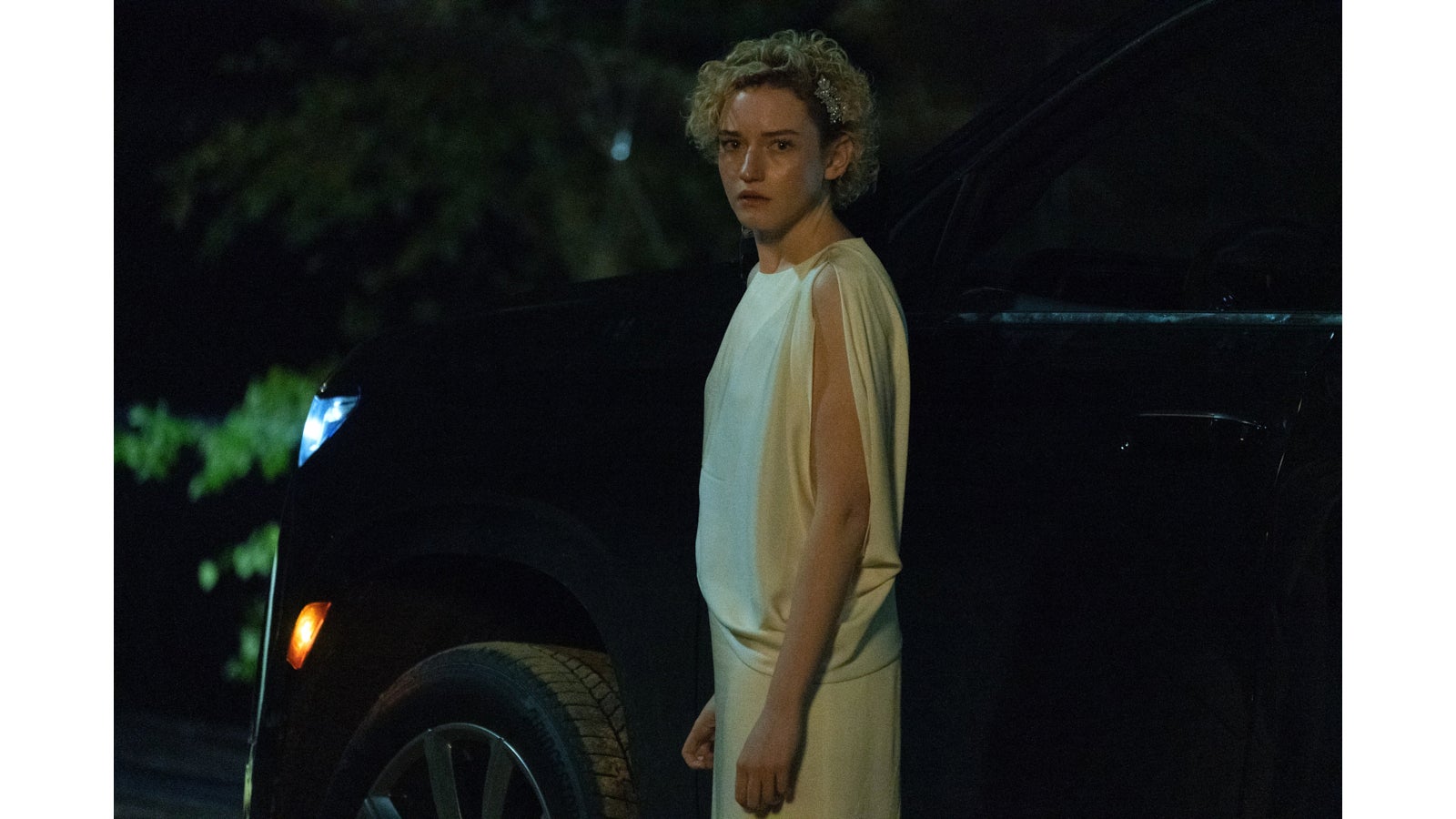
Tina Rowden / Netflix
JB:
How did the internal ND system enhance your creativity?
EK:
Changing the ND is one of the biggest tools for controlling depth of field, and using depth of field on Ozark is a big part of the cinematography. The shallow depth of field really tells a story in a lot of ways, guiding the viewer's eye and emphasizing what's going on inside a character. Being able to change the NDs on the fly when you're working so quickly in TV is hugely important. It saves time and money.
JB:
Which flavor of X-OCN were you guys using?
EK:
We shot with ST. We found that it gave us the best compression ratio.
JB:
Did you guys use Rialto much?
EK:
Yes, we used Rialto a lot. We had cameras built for Rialto only. It's great in cars. We have a lot of weird off-angles and really, only the Rialto will allow you to get that. Rialto is very useful for situations where you need to put a camera in a weird place. Our lenses are very small, which lets us get into places with a Rialto that we normally wouldn't be able to put another camera. And for us on Ozark, there's a lot of off-framing with high headroom and/or weird framing as a purpose. But the Rialto really opens up the possibilities of where you can put the camera for that.
JB:
Did you guys do any virtual work with LED walls?
EK:
Not interactive LED but a lot of the driving scenes, not in Episode 8 but in other episodes, where we had LED walls set up for driving that we could just pop in whenever we needed it. And we would pick a background beforehand and then light to that and use it in the background. But no volume, nothing interactive.
JB:
What are your thoughts on VENICE 2?
EK:
The bumped ISO, 3,200 and 800 base opens up more possibilities for using less powerful lights and gives more creative options because you can experiment more. I love the idea of seeing in the dark with 3,200. Resolution isn't necessarily something that matters as much. It's more about the ISO and how that plays with the color science.
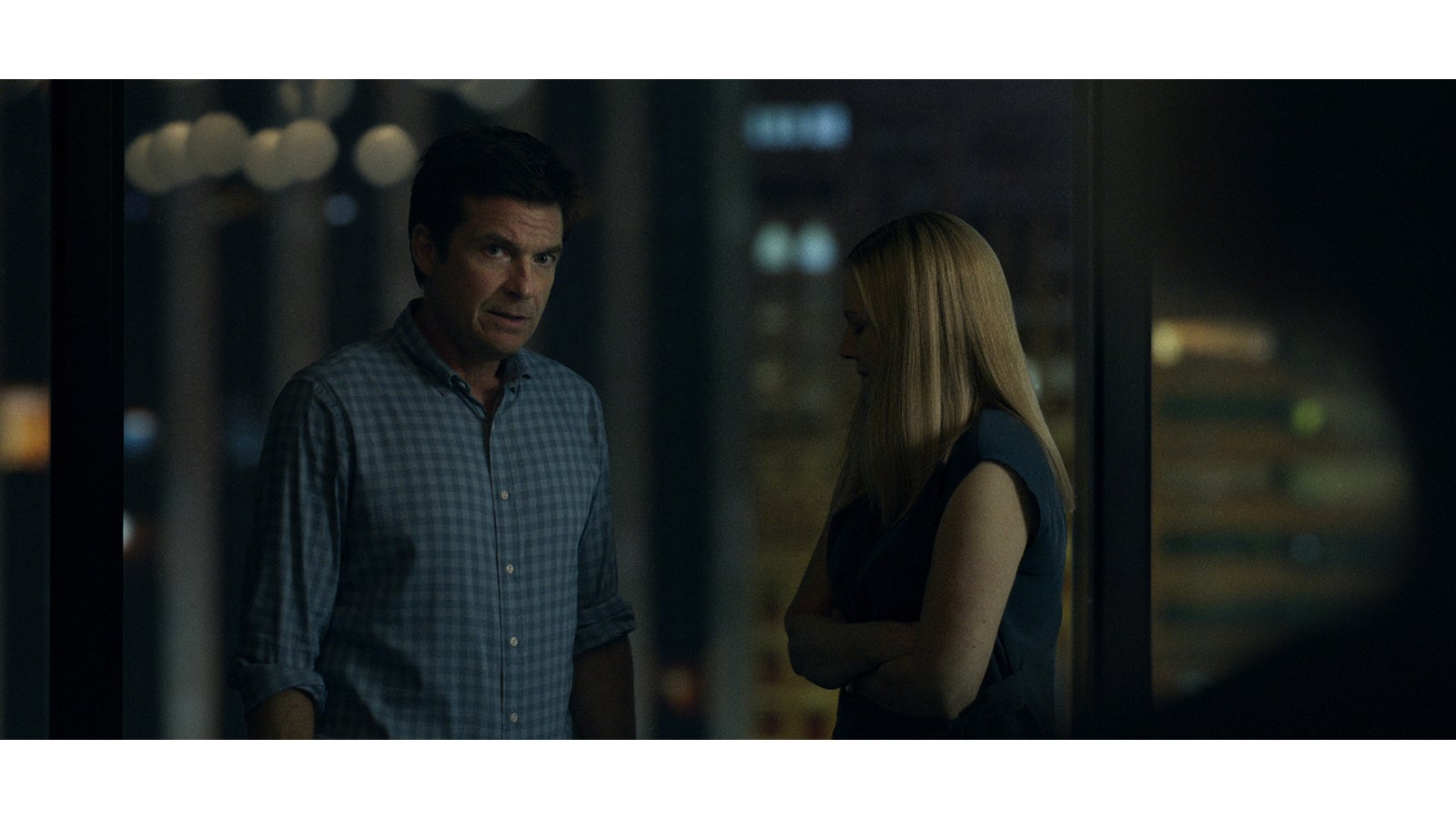
Courtesy Netflix
JB:
And that it's now recording X-OCN internal?
EK:
That's actually a huge thing that I'm excited about. Whenever you can slim the body of the camera down, it makes you more mobile and you can put the camera into places where you wouldn't have been able to before.
JB:
There are a lot of great close-ups in the show. Did you have any favorite focal lengths that you would go to when you just wanted to get in a little bit tighter, or any favorite focal lengths in general?
EK:
Our primary Leica R lenses were the 35, the 50 and the 80 because those are all 1.4s and are beautiful lenses. But we wouldn't necessarily go longer to do a close-up. Sometimes we would be on a 35 millimeter with a diopter up high and angled into the characters, which creates a kind of unsettling portrait. We did them on Ruth a lot.
And the 80 and the 50 mil also played. But we would also use those on a cowboy shot from further away, so you have more fall off in the background. Primarily, we were on those three lenses, and we'd sprinkle in other ones when it was appropriate, but those three lenses really allowed us to play with the depth of field the most because of their stop.
JB:
Speaking of Ruth, It must have been something to shoot the final episode where Ruth dies. What was it like shooting some of those final scenes? And what was the feeling on set knowing that this is truly the end?
EK:
It was incredible shooting Ozark in the first place, which is one of my top-five favorite shows ever made. So, to be able to do that in itself was incredible. But then shooting the finale… we actually shot Ruth's death scene on the very last night we were shooting, which made it even more impactful. Although the impact of it was a little less in the moment because we went till 6:00 a.m., when we were supposed to finish at midnight, so we were all a little tired by the end of the night.
But yes, to watch someone die that you've been watching for years is... I try and distance myself from the acting when I'm shooting but I just remember during that moment, I got teared up because I thought "Oh, this is actually the end of it all. So, yes, it was incredibly emotional.

Courtesy Netflix




